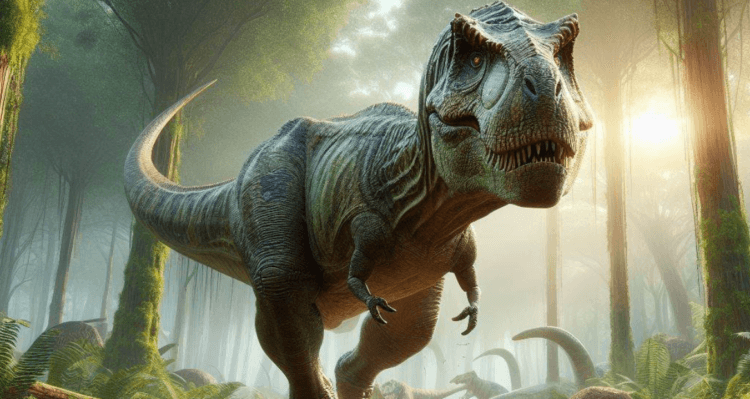A 2023 study by Vanderbilt University researchers found that tyrannosaurs may have been as smart as primates or even smarter. For their assessment, they used the ratio of brain size to body size of the animal, and also took into account the most likely density of neurons. Of course, there is no need to talk about the accuracy of such studies, since they are based on the study of fossilized skulls, as well as methods of comparative anatomy, that is, the authors used data from living animals – reptiles, birds, etc. As a result, the question arises: to what extent were the researchers correct in their conclusions? This question was answered by an international group of scientists who conducted a more accurate study.

Back in the 70s, scientists came to the conclusion that dinosaurs such as T. rex were about the same in their mental abilities as modern reptiles. However, in 2023, the idea of the cognitive abilities of these fossil animals was revised. Scientists have suggested that their brains could be as complex as those of birds. If this is true, then dinosaurs could compete in intelligence with modern apes.
Let us recall that scientists make all conclusions about the size of the brain and its structure on the basis of casts of fossil skulls. They allow you to estimate the volume of tissue that was in it. This is far from an ideal way to obtain information, but there are no other, more accurate methods.

As a recent study published in the journal The Anatomical Record showed, dinosaurs were not particularly intelligent. The traditional view was correct.
Why dinosaurs weren't very smart
The error in the previous study resulted from an incorrect estimate of brain volume. As mentioned above, existing methods are imperfect. Scientists have suggested that in tyrannosaurs the brain filled the entire endocranial cavity, that is, the cranial cavity. However, according to the latest research, this is actually not the case.
The brain does not always fill the entire available cavity. It is 100% filled only in birds. In modern reptiles such as crocodiles and alligators, the brain fills only 30 percent of the cavity, and the rest is occupied by fluid. Scientists analyzed the shape and features of the dinosaur cranial cavity, concluding that the ratio of brain to fluid in the dinosaur skull was closer to that of reptiles than that of birds. That is, the brain was much smaller than the previous study had suggested.

In the new study, the team took into account all the shortcomings of the previous work and tidied up the data set. They standardized estimates of body mass and excluded those structures within the skulls of fossil animals that are not involved in neural activity. In addition to the olfactory bulb, these also include the pituitary gland and the inner ear.

Based on new estimates of brain size, the authors estimated the number of neurons, or nerve cells, in the brain. As a result, they found that the brain of tyrannosaurs had from 250 to 1.7 billion neurons. The brain of crocodiles has approximately the same number of neurons. Let's remember that according to a previous study, T. rex had 3.3 billion cortical neurons, that is, about the same as baboons.
Don't forget to subscribe to our Zen and Telegram channels so you don't miss the most interesting ones and incredible scientific discoveries!
However, it should be borne in mind that brain size and the number of neurons are not direct indicators of mental ability. The number of neurons and brain size vary between animals, but do not always correlate with their intelligence. Therefore, even the current study provides only a rough idea of the possible intelligence of dinosaurs. Unfortunately, we are unlikely to know what they really were. However, we can say with a high degree of confidence that they were not as smart as monkeys.